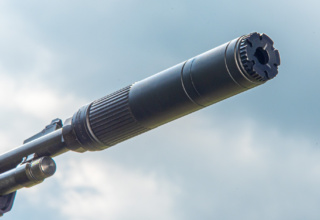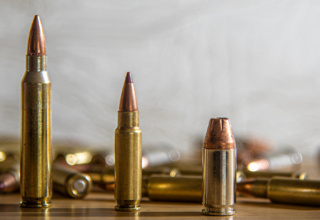This simple approach to shooting form will improve accuracy, consistency, and fix problems you may not even know you have!
Let us start this conversation by stating the obvious: there is no single, magic bullet to improving bow-shooting accuracy.
As any experienced bowhunter will tell you, many elements are involved in properly executing a shot. Stance, grip, draw, breathing, hold, aiming, release, and follow-through all contribute to the accuracy or lack thereof for every shot you take. Add to that the equipment variables (sighting system and release type…assuming all else being equal), and it’s easy to see there is a lot that can go wrong between nocking an arrow and releasing it.
[quotes quotes_style=”bquotes” quotes_pos=”center”]”Until you try to do it right, you may not realize that you have been doing it wrong all along. I sure did not.”[/quotes]
Think of the moment of release as the capstone of building a pyramid. Aside from the follow through, everything involved in making the shot builds up to the moment you break the trigger. All of those elements mentioned are the foundation stones of a properly executed release. If one of those stones fails, a chain reaction of failures can ensue and your shot will suffer.
I’ll be the first to admit guilt of having not always shot with proper form. I got into archery as a seven year-old shooting in the backyard with a 15-lb. fiberglass bow, and it went from there. My informal entry into the sport meant that I did not learn correct form and, as a result, many bad habits followed me through the years. I did not realize I had one of those habits until I picked my traditional bow back up a few years ago.
Shooting the stick-and-string gave me fits. My arrows were correctly spined and flying straight, and my aiming and other shot essentials were spot-on, but all too often, and for no apparent reason, my arrows seemed to go wherever they wanted.
Something was wrong, and it was time to swallow my pride and go back to the basics. That is when I discovered that little thing called back tension.
I did not really discover back tension—more like I rediscovered it. I had known that using the back muscles (primarily the major and minor rhomboids) was the correct way to draw and hold a bow, but thanks to years of shooting with an improper form, I never developed the technique or even thought about it. I just drew my bow and let fly. Once I picked up the recurve, however, I knew that way of shooting wasn’t going to “fly” anymore.
So, I made a conscious effort to do things right—and I can tell you from first-hand experience that until you try to do it right, you may not realize that you have been doing it wrong all along. I sure did not.

How do you draw and hold anchor with your back muscles? It sounds like a simple thing, but you do need to think about it. Many sources describe how to do this, but what you are attempting to do is contract the short and powerful rhomboid muscles that connect the scapula (shoulder blade) to your spinal column.
The way I learned to do it was to think of my drawing arm as an inanimate hook—meaning I do not use any of my upper or lower arm muscles in the course of drawing and holding the bow at anchor. If you can think of your arm this way, you will necessarily draw and hold your bow with only your back muscles. Try this a few times and once you feel it, you will understand.
I immediately realized the benefits of true back tension when shooting my traditional bow. My stability at anchor seemed to improve ten-fold, creep (the tendency for the bowstring to move forward while at anchor) seriously diminished, and those erratic shots disappeared.
I took this lesson learned from shooting my recurve and applied it to my compound bow. Now, if you have shot both traditional and compound, you may think there is a large separation between the two in terms of isolating the draw and hold forms with back tension, but there is not. You use the same muscles the same way. It is just that the massive let-off afforded by the compound reduces the “felt tension” when compared to holding with a traditional bow. In fact, the let-off of a compound bow makes it even easier (at least for me) to isolate the back muscles because the resistance is so much less than with a traditional bow.
Back to the pyramid example we started with. Your foundation blocks are solid (stance, grip, and now draw and hold) thanks to the proper application of back muscle tension. At draw, all tension is in your back and not your arm, which is as it should be. Your draw arm is a “dead hook” and your aim and body is stable. Now it is all about the release.
When I say “release,” I mean both the act of releasing the string and the mechanism by which you release it. If you are correctly applying back tension, this is where an index finger trigger release like the Speed Shot™ XS BOA® truly shines.

The BOA® mechanism allows you to snug the wrist strap just right—neither too tight nor too loose. Because of this perfect and adjustable fit, the Speed Shot™ XS BOA® minimizes muscle tension in the wrist and forearm. This further isolates your back tension and facilitates proper follow-through upon release.
The key advantage of the combined application of back tension and a quality trigger release like the Speed Shot™ XS BOA® is you now have the ingredients for the “surprise release.”

Whether you are shooting a firearm or a bow, the surprise release is always the goal. Anticipating the moment of release can introduce errors in shooting form and concentration, and it can lead to more serious issues such as target panic—something to avoid at all costs. With the Speed Shot™ XS BOA® and good back tension, you are better able to aim and depress the release trigger without introducing muscle movement that can disrupt either. By limiting muscle activity to the back and the index finger only, a steady trigger pull will deliver a surprise release and a proper follow-through of your release hand.
And that is what we call Launching the Perfect Release.
















